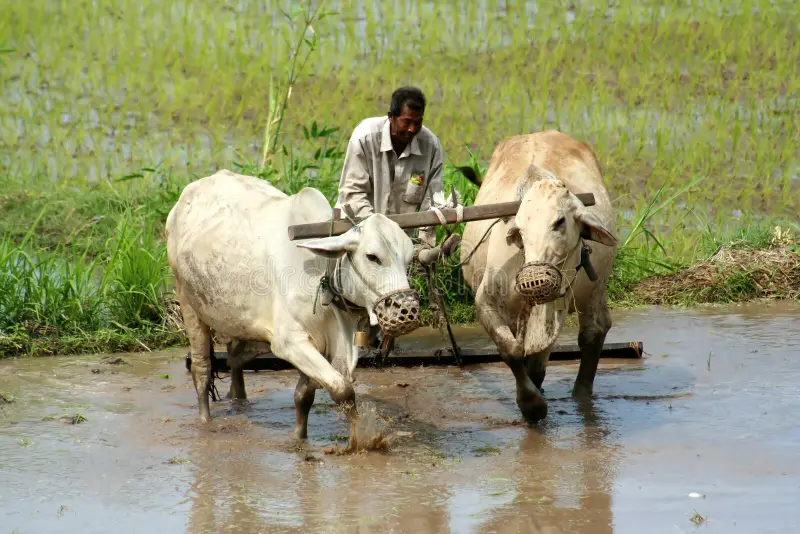Subsistence Farming in India: Subsistence farming is a type of agriculture prevalent in India, where crops are cultivated to meet the basic needs of farmers and their families. This article explores the concept of subsistence farming, delving into its characteristics and types, including primitive subsistence farming and intensive subsistence farming.
Characteristics of Subsistence Farming in India:
- Land Use: Subsistence farming in India typically involves cultivating small plots of land, ranging from approximately 1 to 3 hectares. The focus is on producing goods solely for family consumption, rather than for commercial purposes.
- Labour: Farmers primarily rely on family labor to work on their farms, although they may occasionally hire additional labor during peak cultivation periods.
- Power and Transport: Livestock serves as the primary source of power in many regions, enabling farmers to plow fields, carry loads, and transport their goods. Unlike commercial farming, subsistence farming does not extensively use modern facilities such as electricity or irrigation. Farmers also tend to use traditional seeds and organic fertilizers, resulting in lower productivity.
- Productivity: Subsistence farming involves minimal input usage. Farmers often refrain from purchasing commercial seeds or chemical fertilizers, resulting in lower yields per hectare and overall productivity.
- Income and Living Standards: Since subsistence farmers primarily produce for their own consumption, their income is usually insufficient, placing them below the poverty line. Their livelihoods largely depend on the crops they grow.
- Role of Livestock: Livestock plays a vital role in subsistence farming in India. Animals serve as a form of insurance for farmers, providing economic support in times of crop failure. Livestock also provide dairy products, meat, and eggs to sustain farmers’ families.
- Social and Cultural Reasons: Owning cattle, horses, camels, or goats holds social and cultural significance in traditional farming practices. The number and type of animals owned often reflect a family’s status.
- Element of Uncertainty: Subsistence farming carries a high level of risk due to the uncertainty of crop outcomes. The failure of one or more major crops can significantly impact a farmer’s efforts for the entire year.
read more: Subsistence Farming in the Caribbean: Nurturing Sustainable Food Systems
Types of Subsistence Farming:
- Primitive Subsistence Farming: Also known as simple subsistence farming, primitive subsistence farming is the oldest form of agriculture. It involves self-sufficiency, where farmers grow crops to meet their family’s needs. Surplus production, if any, may be exchanged for cash. Primitive farming includes shifting cultivation, where forests are cleared by fire, and nomadic herding, where shepherds move with their livestock.
- Intensive Subsistence Farming: Intensive subsistence farming focuses on high output per unit of land but lower output per worker. It is prevalent in monsoon lands of Asia, including India. This type of farming involves smaller land plots, greater labor requirements, and the cultivation of multiple crops annually on the same land.
read more: Intensive Subsistence Farming: Maximizing Yield on Small-Scale Farms
Conclusion
Subsistence farming in India encompasses small-scale agricultural practices that prioritize meeting the basic needs of farmers and their families. The characteristics and types of subsistence farming, including primitive and intensive subsistence farming, showcase the diverse approaches adopted by farmers in different regions. By understanding these farming methods, we can appreciate the vital role subsistence farming plays in sustaining communities and shaping agricultural practices in India.


